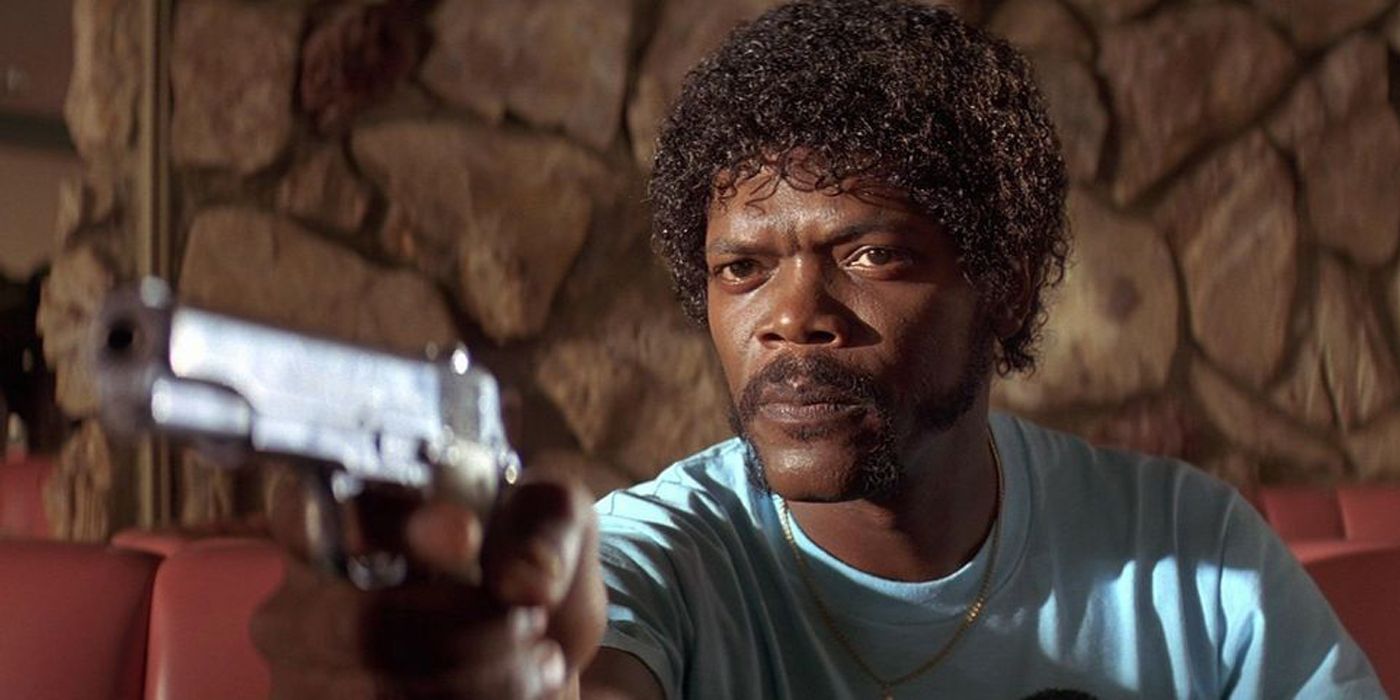
Pulp Fiction originally had an extra scene in the final encounter between Jules Winnfield and the robbers at the diner, and it was a wise decision to leave it out of the movie. Quentin Tarantino is now one of the most popular and respected filmmakers in the industry, and his movies have stood out thanks to his mastery in writing dialogues, narrative style, and for adding generous amounts of violence and blood to each one of them. Tarantino’s career began in 1992 with the crime movie Reservoir Dogs, but his big break arrived two years later with Pulp Fiction.
Pulp Fiction is also a crime movie but it stood out for being told in a non-linear manner and for how each segment and character connects to the rest. Pulp Fiction follows different characters in different segments that together form a cohesive story, with these characters crossing paths at some point. The leads of each short story are hitmen Vincent Vega (John Travolta) and Jules Winnfield (Samuel L. Jackson), their boss Marsellus Wallace (Ving Rhames), his wife Mia Wallace (Uma Thurman), and boxer Butch Coolidge (Bruce Willis). Rounding up the cast are robbers Pumpkin (Tim Roth) and Honey Bunny (Amanda Plummer), who open and close Pulp Fiction with the robbery of a diner.
The opening scene of Pulp Fiction sees Pumpkin and Honey Bunny eating at a diner when suddenly it’s revealed they’re not just there for lunch but to rob the place, and the movie cuts right as they announce they’re going to rob the place. Pulp Fiction goes back to them in the final segment, where the robbers come face to face with Jules and Vincent, who stopped by for lunch after a pretty hectic morning. Although this encounter could have ended in a bloodbath, Jules convinced Pumpkin and Honey Bunny to leave without hurting anyone, but in the original script, blood was shed for a moment.

Samuel L. Jackson revealed that in the original script for Pulp Fiction, there was a brief scene during the final segment at the diner where Jules imagined shooting Pumpkin in the face and shooting Honey Bunny off the counter, only to cut back to the real scene where no one was hurt. By the time Jules and Vincent arrive at the diner, Jules had already decided he was going to retire as the “divine intervention” moment they went through earlier gave him a new perspective, which is why he chose to talk the robbers out of their plan instead of going on the violent route. Keeping that “dream” scene of Jules killing the robbers would have detracted from Jules’ transformation as it would have shown that killing was still an option and even an instinct to him, and the violence would have felt forced and out of place.
That scene would have also broken the tension between Jules, Pumpkin, Honey Bunny, and Vincent, as it’s unknown if any of them will give in and react violently, and having Jules imagine how he will kill them completely messes with the tone. Jules killing the robbers at the end of Pulp Fiction, even if just in his imagination, wouldn’t have added anything to the movie and would have actually hurt the character and the movie in general, so it was a wise decision to leave it out.
Comments
Post a Comment